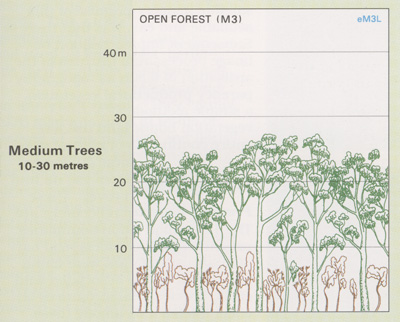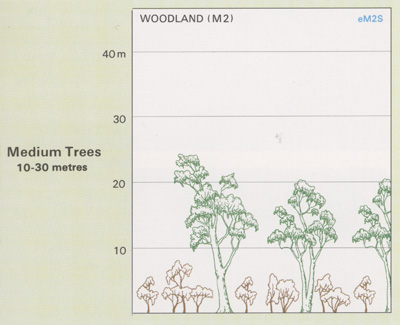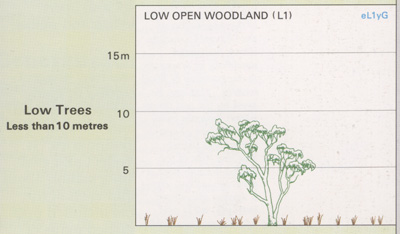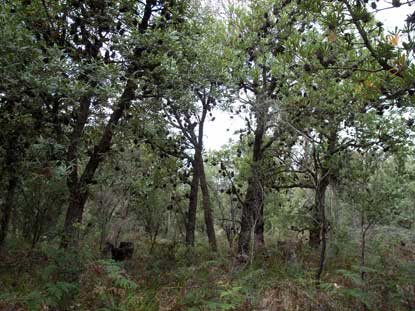 Banksia woodland, Ben Boyd National Park, NSW |
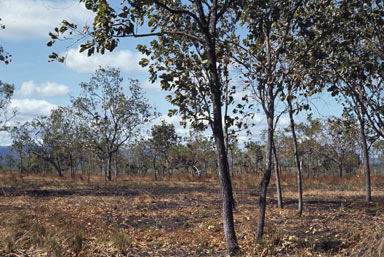 Tropical savannah woodland dominated by Terminalia platyphylla, Lakeland Downs, Qld |
| These occur as Open Forests, Low Open Forests, Woodlands, Open Woodlands, Low Open Woodlands and Low Woodlands; a few of which structures are illustrated below: Foliage cover of tallest stratum 30 - 70% |
Other Forests and Woodlands
- A diverse group of communities, some of which
(e.g. Banksia woodlands and Leptospermum forests) are comparatively restricted in their
extent but may be locally abundant.
- Includes the mixed species woodlands in
northern Australia dominated by genera such
as Adansonia (baobab), Lysiphyllum, Pandanus and Terminalia.
- Dominant genera of arid zone woodlands and
open woodlands include Hakea, Heterodendron,
Myoporum, Geijera, Flindersia, Macropteranthes (bonewood) and Lysiphyllum.
- Exhibit a variety of subforms, with understoreys ranging from low trees and shrubs, to low shrubs or tussock grasses.
In many coastal areas this group has been extensively cleared for agriculture or urban uses. Extensive areas remain in the arid zone, often modified by grazing pressure from domestic stock, feral animals and macropods.
![]() Photos from the Australian Plant Image Index
Photos from the Australian Plant Image Index
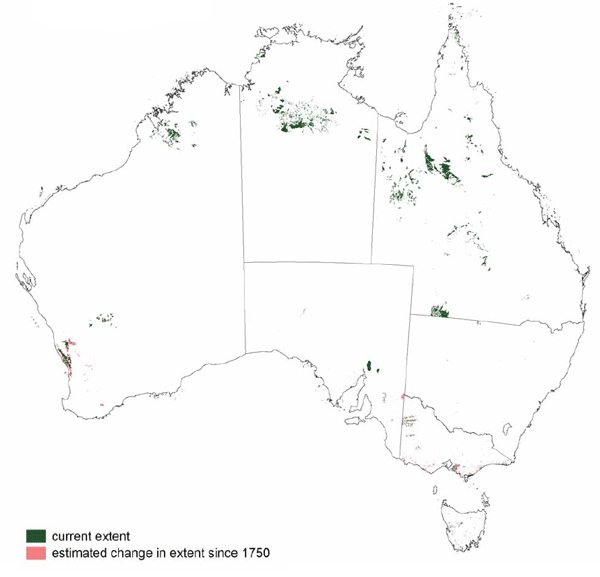
Sources: Australia's Native Vegetation - from rainforest to spinifex, map and information poster produced by the National Land & Water Audit, Natural Heritage Trust, Australian Government, 2001
Australia's Native Vegetation - A summary of Australia's Major Vegetation Groups, 2007, Australian Government website
https://www.environment.gov.au/system/files/resources/a9897cf2-9d38-4201-bea2-13dadf3af9a8/files/major-veg-summary.pdf
Structure diagram: Atlas of Australian Resources - Vol. 6, Vegetation,
AUSLIG, Canberra, 1990
![An Australian Government Initiative [logo]](/images/austgovt_brown_90px.gif)


